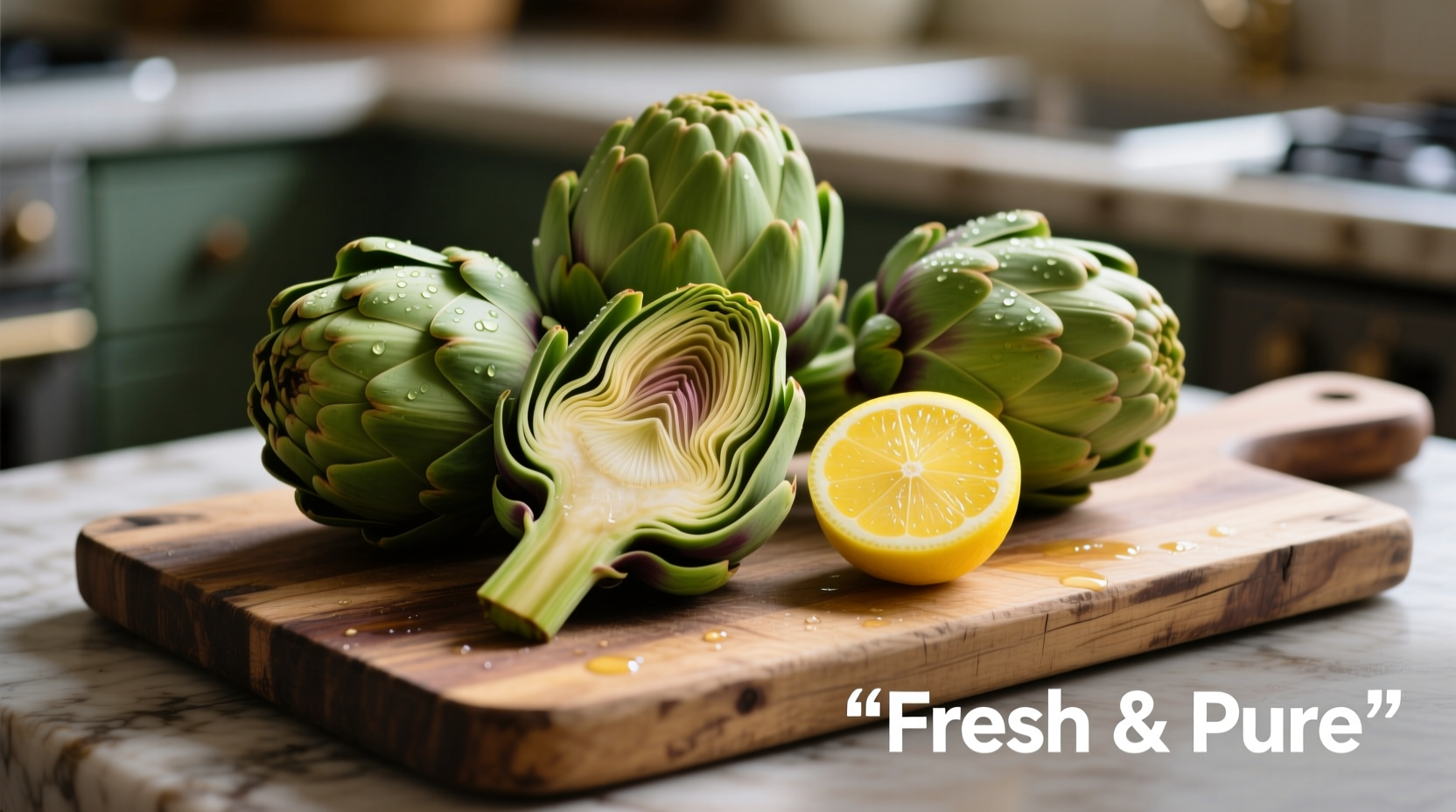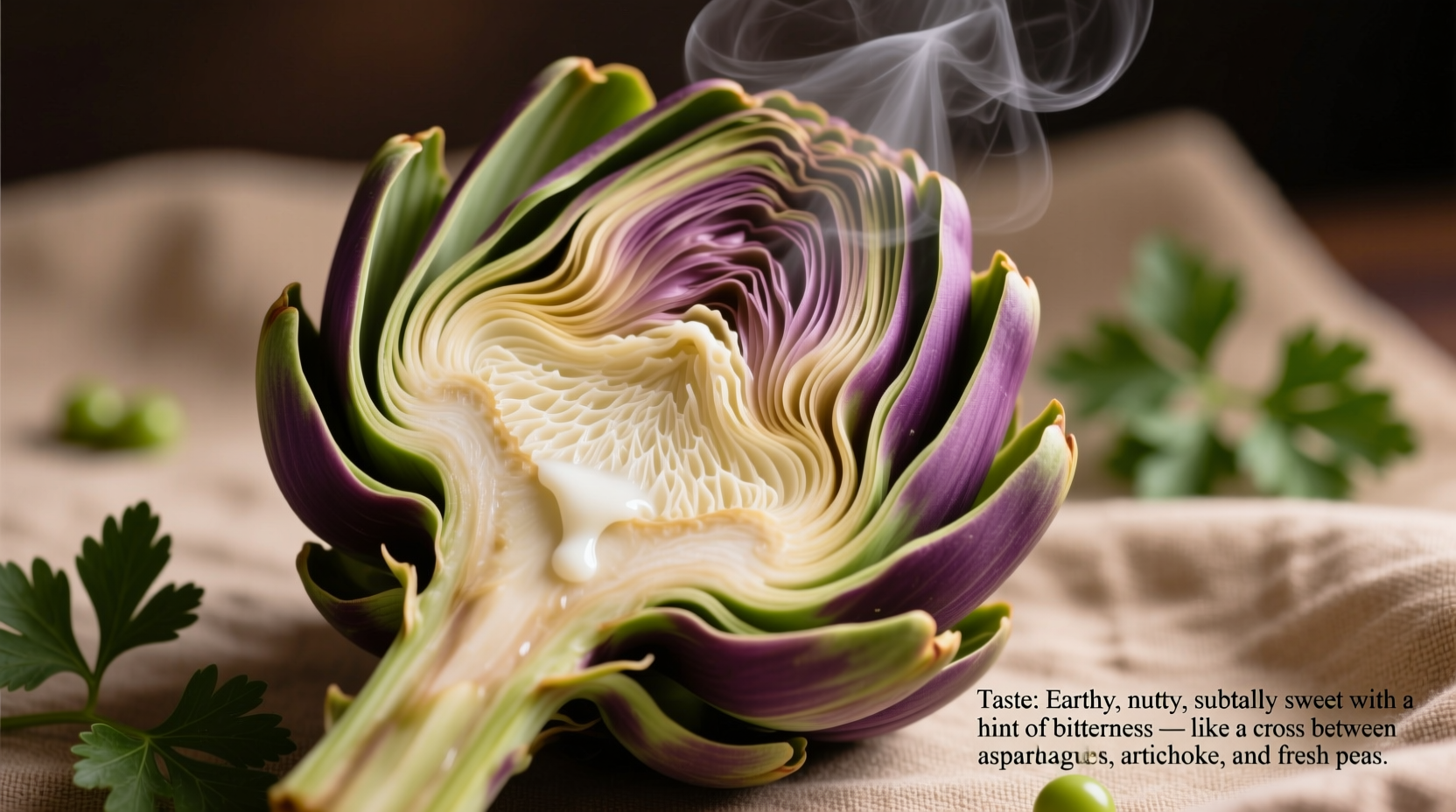The Complete Flavor Profile of Artichokes: What to Expect
Understanding what artichokes taste like requires exploring their unique flavor characteristics across different preparation methods and parts of the vegetable. Unlike many vegetables with straightforward flavor profiles, artichokes offer a nuanced tasting experience that varies depending on how you prepare them and which part you're eating.
Breaking Down the Artichoke Taste Experience
When you take your first bite of a properly prepared artichoke, you'll notice several distinct flavor elements working together:
- Nutty undertones - Similar to fresh almonds or sunflower seeds
- Earthy sweetness - Reminiscent of asparagus or cooked celery heart
- Subtle grassiness - A mild herbal note that's never overpowering
- Citrus-like aftertaste - Thanks to cynarin, a compound that makes water taste sweet afterward
The texture plays an equally important role in the overall experience. The fleshy base of the leaves provides a satisfying chew, while the heart delivers a tender, almost creamy consistency when cooked properly. This combination of flavor and texture makes artichokes a uniquely enjoyable vegetable to eat.

How Preparation Changes Artichoke Flavor
The cooking method dramatically impacts what artichokes taste like. Here's how different techniques transform their flavor profile:
| Preparation Method | Flavor Characteristics | Best For |
|---|---|---|
| Steamed | Clean, bright flavor; preserves natural sweetness | First-time eaters; showcasing pure artichoke taste |
| Boiled with lemon | Milder, slightly tangy; reduces any potential bitterness | Traditional preparation; family meals |
| Grilled | Smoky, caramelized edges; intensified nuttiness | Summer entertaining; bold flavor seekers |
| Marinated (raw) | Crunchy texture; pronounced grassy notes | Salads; Mediterranean cuisine |
According to research from the University of California Agriculture and Natural Resources, the cooking time significantly affects artichoke flavor development. Their studies show that artichokes cooked for 25-30 minutes develop optimal flavor compounds, while undercooked artichokes can taste unpleasantly fibrous and overcooked ones lose their distinctive character.
Tasting Different Parts of the Artichoke
Each section of the artichoke offers a unique tasting experience:
The Leaves
The outer leaves have a slightly more pronounced grassy flavor with a satisfying fibrous texture. As you work your way toward the center, the leaves become increasingly tender with a more concentrated nutty sweetness. Many people enjoy scraping the leaves through their teeth to extract the flavorful flesh.
The Heart
The artichoke heart is the culinary prize—tender, meaty, and intensely flavorful. It has a buttery texture with pronounced nutty and earthy notes that make it versatile in numerous dishes. The heart contains the highest concentration of cynarin, the compound responsible for artichokes' unique aftertaste effect.
The Choke (to be removed)
The fuzzy choke layer above the heart isn't edible and has an unpleasant, almost dusty texture. When properly removed, it won't affect the flavor experience at all.
Why Some People Think Artichokes Are Bitter (And Why They're Wrong)
A common misconception is that artichokes taste bitter. In reality, properly prepared fresh artichokes should never be bitter. The perception of bitterness usually comes from:
- Using older, less fresh artichokes
- Overcooking, which breaks down desirable compounds
- Eating the inedible choke portion
- Not using acidic elements like lemon during preparation
The USDA FoodData Central confirms that fresh artichokes contain natural sugars that balance their earthy notes, creating a complex but pleasant flavor profile when handled correctly. Their nutritional analysis shows artichokes contain approximately 1.7g of natural sugars per 100g, contributing to their subtle sweetness.
Seasonal Impact on Artichoke Flavor
Artichokes have a distinct season (typically March through May in the Northern Hemisphere), and their flavor varies throughout the year:
- Early season - Tighter, smaller artichokes with more concentrated flavor
- Peak season - Perfect balance of tenderness and flavor complexity
- Late season - Larger artichokes that may be slightly more fibrous
Freshness dramatically affects taste. Choose artichokes that feel heavy for their size with tightly closed leaves that squeak when squeezed. Older artichokes develop a woody texture and lose their delicate flavor nuances.
Perfect Pairings: What Flavors Complement Artichokes
Understanding what artichokes taste like helps you create perfect flavor combinations:
- Lemon and garlic - Classic pairing that enhances natural sweetness
- Olive oil - Complements the nutty undertones beautifully
- Herbs like tarragon or parsley - Add brightness without overpowering
- White wine - Creates a delicate acidic balance
- Seafood - Particularly shrimp or fish in Mediterranean preparations
Professional chefs at the Culinary Institute of America note that artichokes' unique cynarin compound creates an interesting sensory phenomenon—after eating artichokes, water and other foods may temporarily taste sweeter. This makes them an excellent palate cleanser between courses in multi-dish meals.
Common Artichoke Flavor Questions Answered
Many first-time artichoke eaters wonder how they compare to other vegetables. Artichokes have a distinctive flavor that doesn't perfectly match any single vegetable, but shares characteristics with:
- Asparagus - In their earthy, slightly grassy notes
- Broccoli stems - In texture and mild vegetal quality
- Hearts of palm - In the tender heart's texture
- Young sunflower seeds - In their nutty undertones
Unlike these vegetables, artichokes offer a more complex flavor journey as you work through different parts of the vegetable, making them a uniquely interactive eating experience.











 浙公网安备
33010002000092号
浙公网安备
33010002000092号 浙B2-20120091-4
浙B2-20120091-4